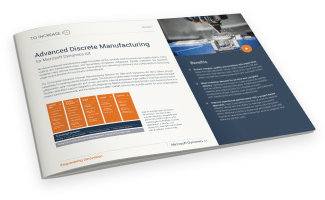Why Integrate Product Lifecycle Management with Your ERP-system?
 Jerry Caous
Jerry Caous
Table of contents
Product Lifecycle Management (PLM) and Enterprise Resource Planning (ERP) are two vital components of every successful modern manufacturing company. Still, up until recently, both systems have mostly led separate lives within organizations. Fueled by the common gap between product development and business planning, departments used these systems independently, rarely sharing relevant data.
Data is the new number one resource
As data is quickly becoming the most valuable resource for manufacturers globally, we are now seeing rapid change. Organizations are increasingly recognizing the benefits of PLM and ERP integration, as they transform into Industry 4.0. In this blog, we highlight six common reasons for companies to invest in ERP and PLM integration.
- You have invested in both systems—time to maximize your ROI
ERP and PLM are amongst the most critical IT investments of a modern manufacturing company. The stakes are high, and so are the costs. With so many resources involved, it only makes sense to connect the dots and create a true end-to-end manufacturing platform. By integrating PLM with ERP you get the best result possible from both systems, allowing you to improve operations vastly.
- You can plan your resources on the best data available
The more you know about the products you aim to produce, the more accurately you can manage time and resources—the critical task of your ERP-system. By integrating PLM with ERP you have instant access to all relevant product details, meaning you can better source materials, plan capacity, and forecast output.
- You can align departments
A disconnect between engineers working in PLM and operational teams in ERP not only creates productivity challenges; it also creates a siloed mindset that is holding back many companies today. How are you to collaborate on a greater goal if your systems cannot even communicate properly? By integrating PLM and ERP you streamline some of the critical processes behind true product innovation.
- You can work towards ensuring product quality
A full PLM-ERP integration prevents products from being manufactured based on incorrect specifications, which could have a severe effect on revenue further down the line. Unclear procurement instructions could compromise product quality causing unmarketable products, or worse, liability claims from customers receiving items that do not match their specifications.
- You can save valuable time syncing data
Without PLM and ERP integration, users spend much time on syncing data, whether manually or in batch. This is fatal for plant productivity and can cause serious errors.
- You can improve decision making
In our fast-paced economy, swift decision making is essential. But to do so, your management team needs constant access to accurate and complete information. Without ERP and PLM alignment this information is siloed and not easily accessible, increasing the risk of poor decision-making.
Take your first step towards PLM integration today
Maybe this is the first time you fully realized the possible benefits of PLM and ERP integration. Or perhaps you are already seriously exploring the next steps needed to make this happen. In both cases, we are ready to help you take the next step. Please contact us today to discover how STAEDEAN helps leading manufacturing organizations transform.
Learn how PLM and ERP integration is critical for overall success.


